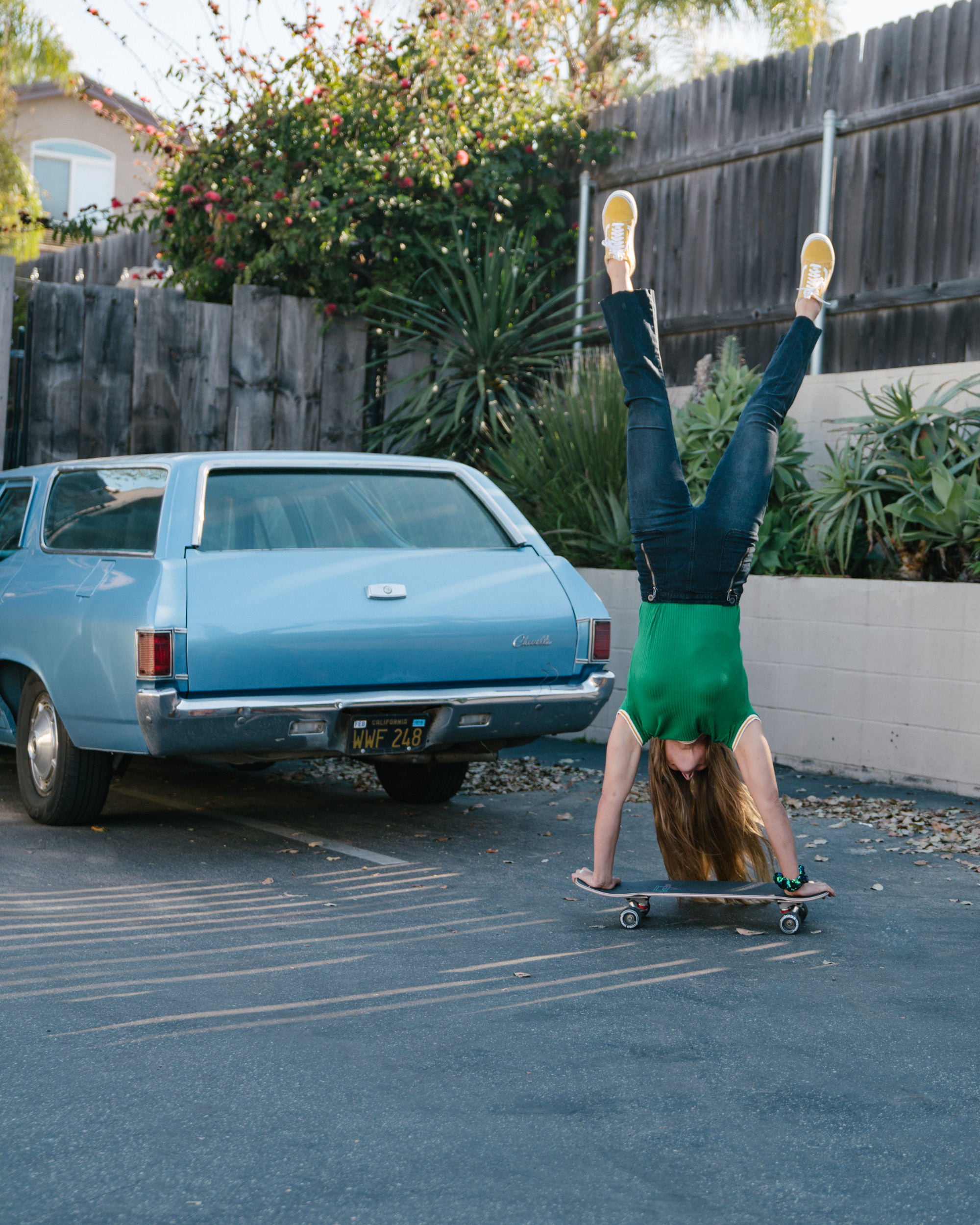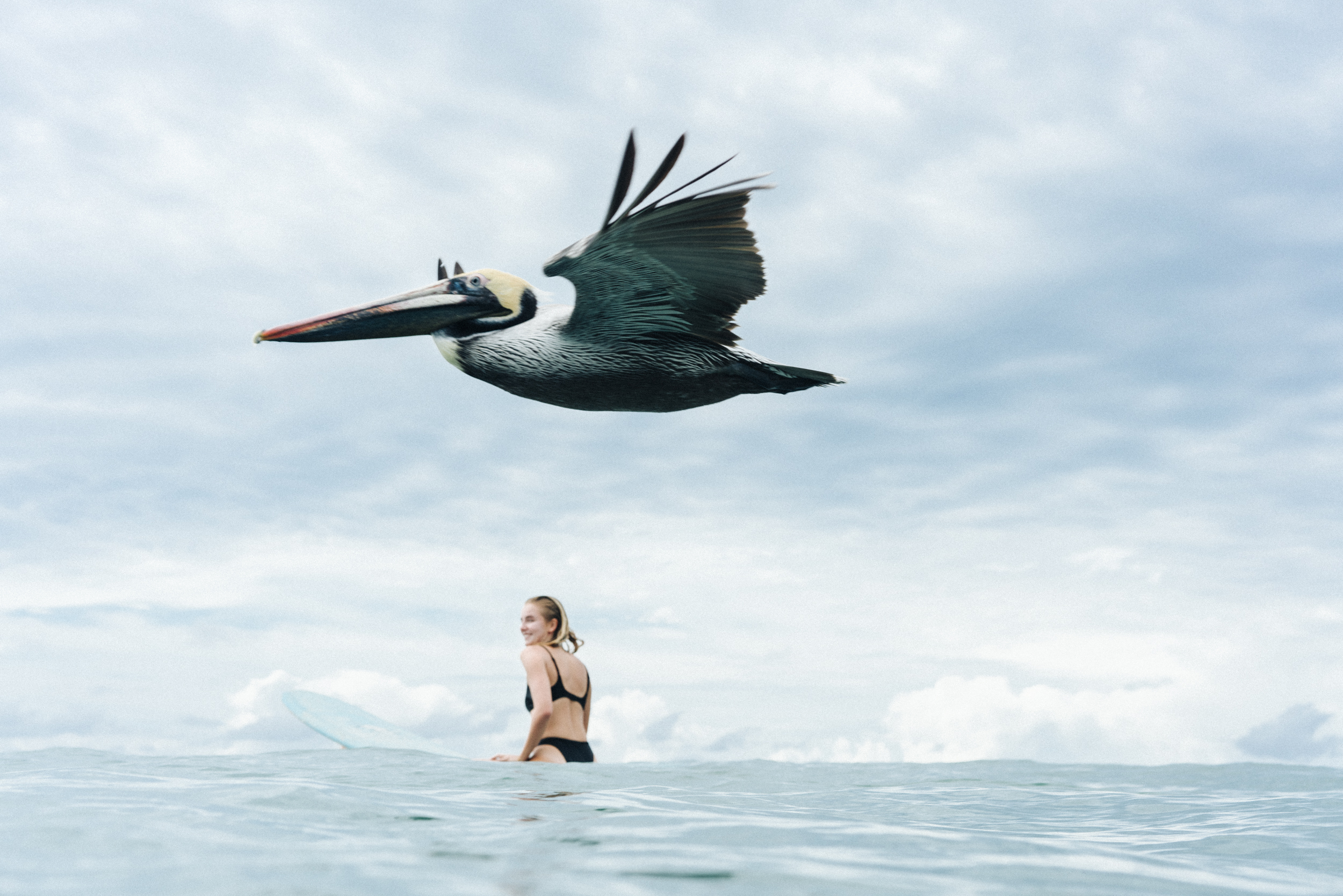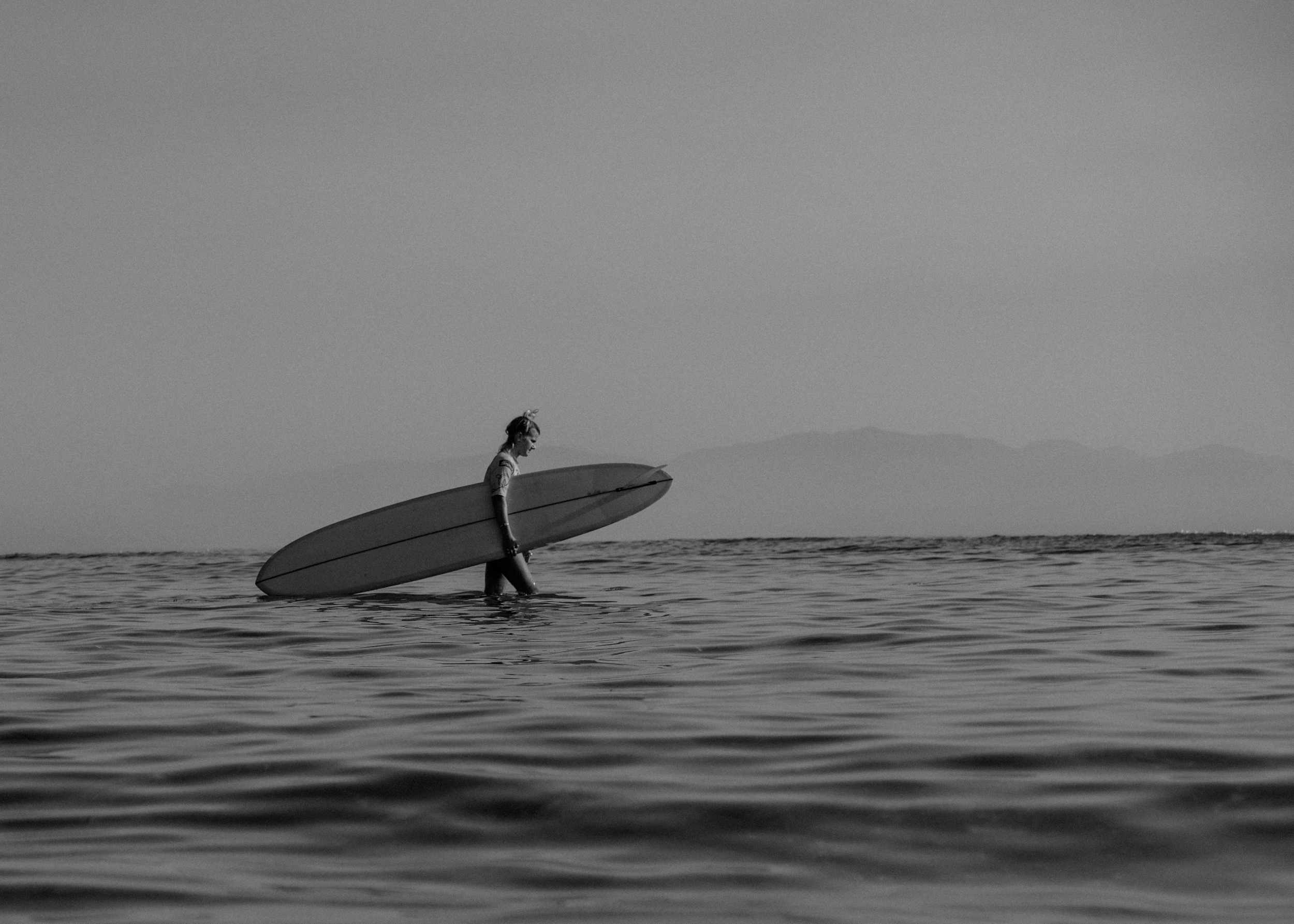Jo Savage‘s photography is transportive. She doesn’t just capture some of the most vivid skate and surf portraits we’ve ever seen, she brings static images to life by weaving the surrounding environment and her subjects together in a way that inspires a story in your imagination. The Encinitas, California-based photographer and journalist primarily captures surf, skate, and mountain photography in an effort to tell the untold stories of each respective community. And while skate photos (and largely all extreme sports photography ) often have a tendency towards the extreme, favoring fish-eye lenses and in-the-action angles that attempt to capture the kinetic energy of the sport, Savage’s photos opt for a much more intimate view, offering us a glimpse into the life of the person on the board.
The result is nothing short of cinematic, so it doesn’t surprise us to learn that Savage cut her teeth in the film studies realm before finding photography. We chatted with the photographer to learn a little bit more about her process as well as get some tips on how to better capture the adventures that await you this year. We’ve made the case for upping your photo game this year, so get out there and start making art out of your travel. If surf, skate, and mountain climbing culture is your jam, we couldn’t think of a better teacher than Jo Savage.
Check out our interview below and head to Savage’s Instagram account to learn more about the stories of each athlete in her photos.
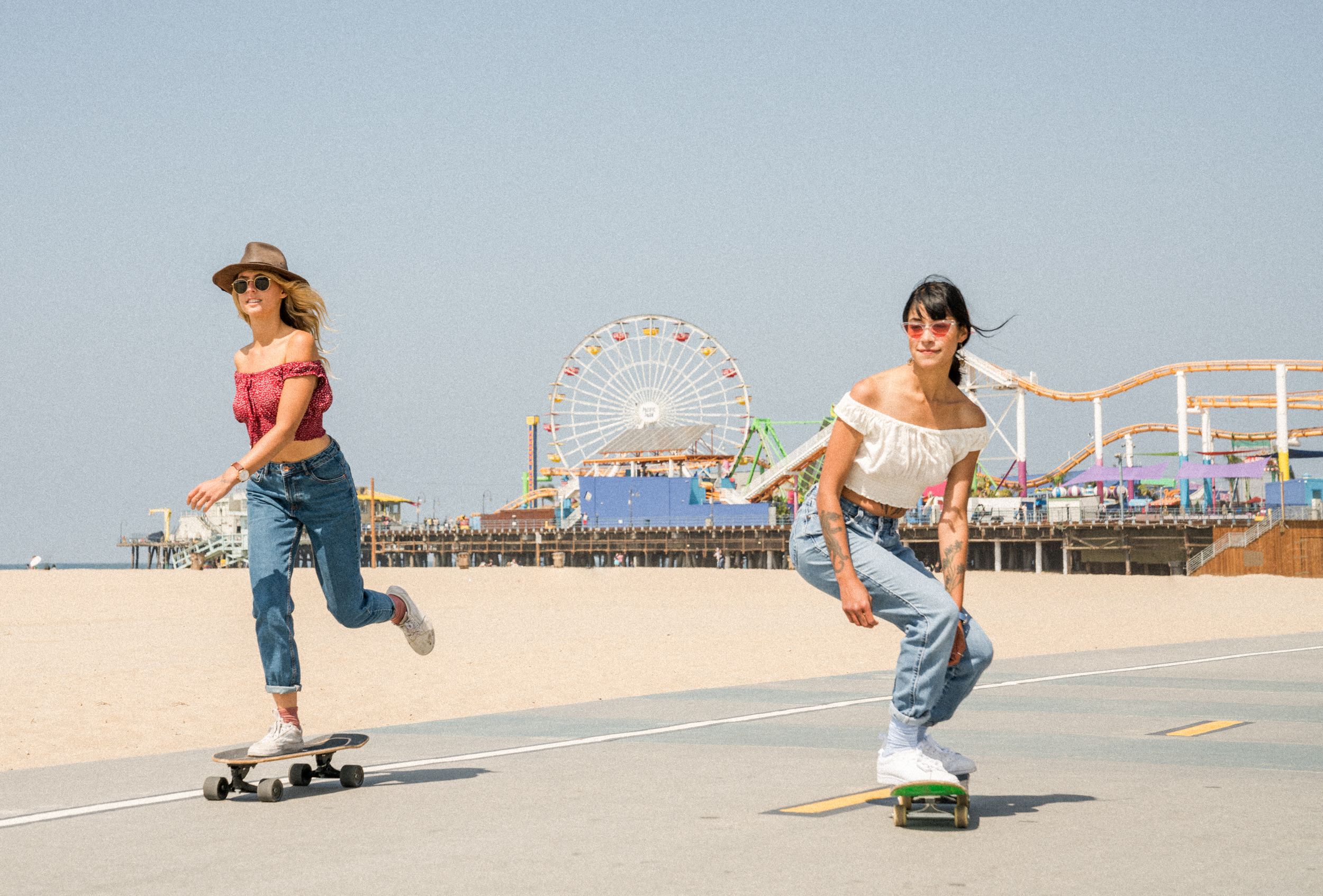
One of the things that really stands out to me in your photography is just how balanced the attention to the environment and the subject you’re photographing are. I never feel like your photos are just great nature shots, or just great portraits — they’re both. Is this a conscious decision?
Thank you so much! It’s intentional for the most part. Sometimes the composition is too amazing to not capture. However, an underlying goal of my work intends to allow the viewer to see themselves in the natural world. I want this to inspire my audience to get outside more often. I hope if people can feel connected to the environments portrayed that they will care more deeply to protect them.
As a lover of nature, how do you know when the perfect time to take a photo is? Or is it just about enjoying the moment in real-time?
That’s a tough discipline to adopt (to put the camera down and just be in the moment), especially when you’re a compulsive photographer like me. However, through time, my relationship with photography while out enjoying nature has become more consciously balanced. It’s important to be connected to the moments distraction-free.
I’ve gotten to the point where too many photos in my catalog sit untouched. I don’t want to add more to the pile unless it’s really “worth it”. When it’s not, I capitalize on that time to play and forget about the camera. The perfect moment for me to take photos strikes when I’m inspired by the landscape, light, activity and my company. The passion takes over. I appreciate my work more when I’m not shooting everything that moves. When I’m more selective or conceptualize images I want to create beforehand.
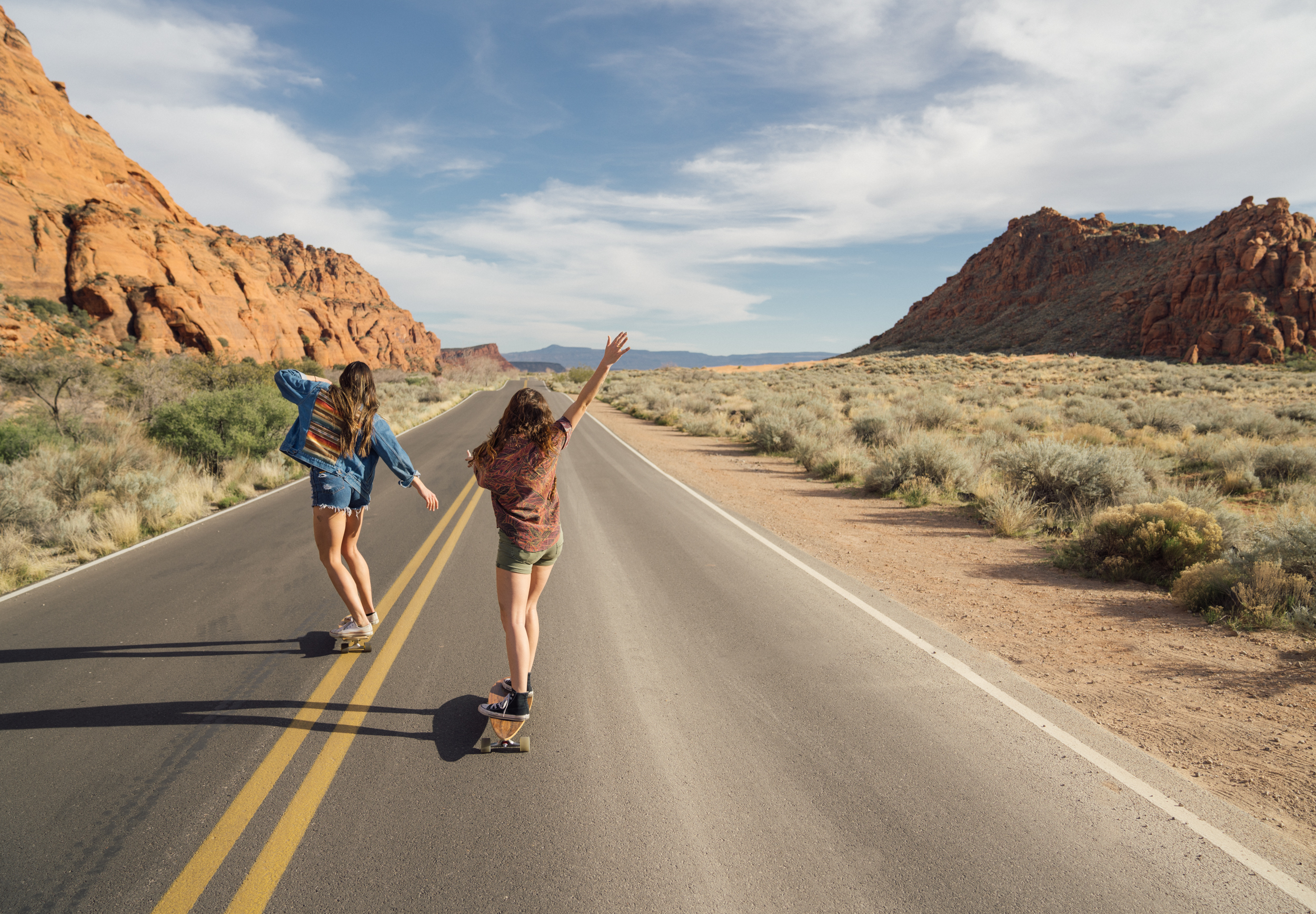
Do you feel like your personal interests enhance your creative expression? You aren’t just sharing others’ hobbies with us, they’re yours, which gives you a kind of insider’s perspective to the things you photograph. Does that help or hinder you?
My interests dictate my creative expression because I’m actively trying to build my career around the lifestyle I want to live. I want to climb, surf, and skate all over the world and build relationships with people in these communities for the rest of my life. Firsthand experience is not required, but it is instrumental to capturing surf, skate, climb or whatever activity you’re shooting. It provides a more intimate knowledge of what imagery will resonate authentically with the communities represented, as well as the athletic moments and body positions that showcase the athlete’s skill and style.
What are your favorite things about photographing skaters and surfers?
Definitely the communities and culture surrounding each, and the people I’m able to build relationships with. It’s a vibe. When we are out doing these things and taking pictures– there’s a mindset and an energy that’s super invigorating, motivating and pure.
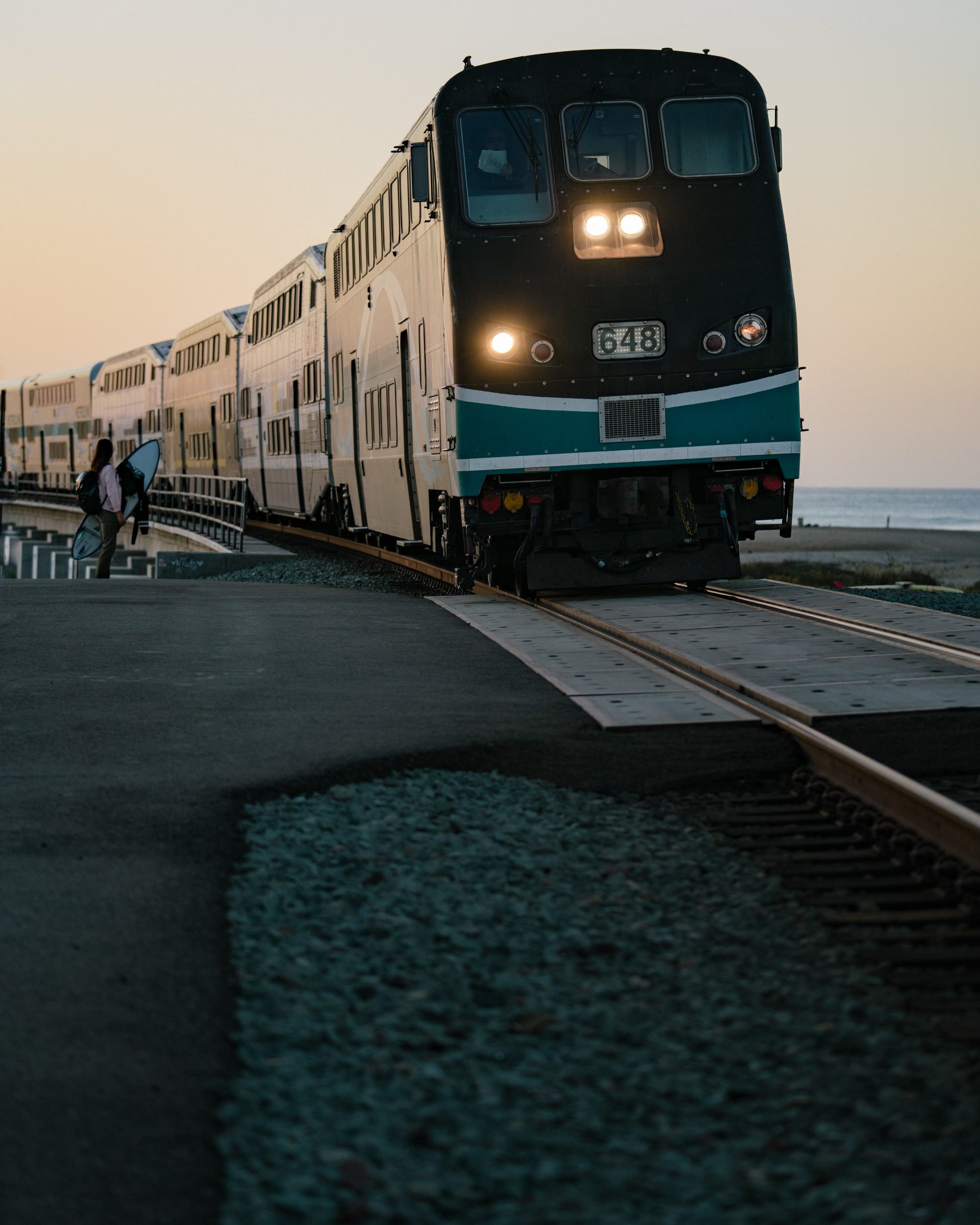
Which countries or cities do you think have the best places to surf and skate?
I loved the South of France. Bali was insane. Sayulita, Mexico, and surrounding areas are spectacular. I’ve heard Barcelona has an amazing skate scene. And let’s be honest, California holds a top spot for both.
Your photos tell a story — For example, we don’t just see how surfers ride waves, we get to see them in the car on the way to the beach, or just hanging out — you capture the lifestyle rather than just the action, why was this so important for you to highlight?
At the beginning of my photography career, I learned while hanging with top athletes in Utah that so much goes into a summit moment. From the training to the routines and regimens, diets, gear prep, climate and landscape knowledge, snack prep for missions, traveling, approaches, I could go on….
I thought what a shame to only shoot the pinnacle moment when there are so many other facets to telling the full story. Often times they are funnier, more relatable scenes that allow the audience to get to know the person and lifestyle behind the send. Maintaining this mindset establishes a fundamental storytelling element of my photography.
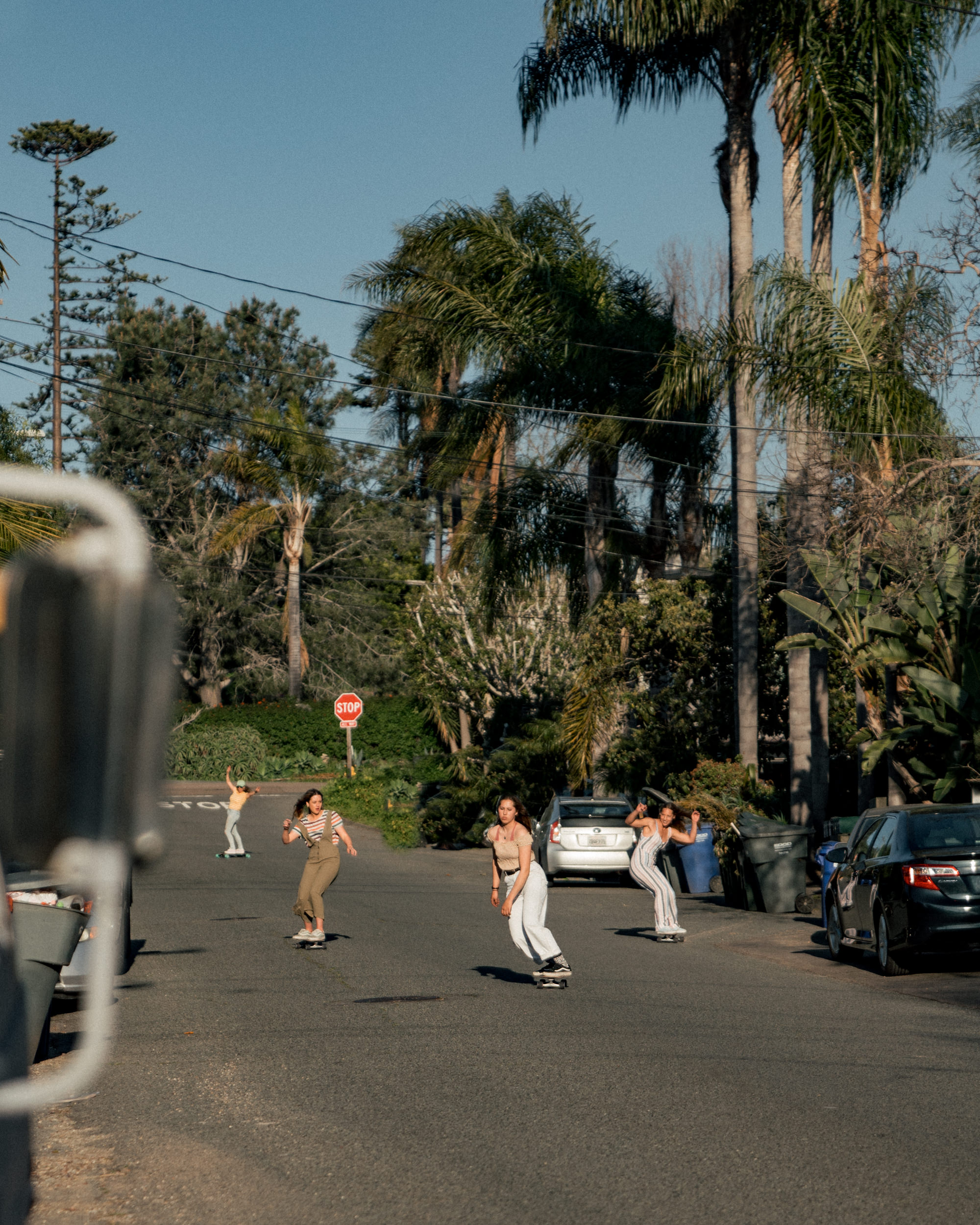
Have you ever given any thought to taking up video as a medium? You clearly have a knack and love for storytelling. To put it another way — what about still-images really excites you as a storytelling device?
Video was my first love… as a kid I thought I’d be a cinematographer. My high school multimedia class solidified this for me. I claimed Film and Video Studies as my major the first semester in college. It’s a long story of how that path became a dead end. 2018, I filmed with a DJI Mavic for a year and put together a few edits. I do love the drone. Then I bought a gimbal, because I thought I’d really pursue the video thing. I started trying to splice together some edits in Premiere Pro. I felt like the hours it took to make a 30-second edit was a beast I ultimately didn’t want to slay.
Also, I crashed my drone about six times.
I still don’t feel like I am where I want to be as I photographer or writer, so for now, I’ll put my energy toward improving there. Maybe one day I’ll pick video back up.
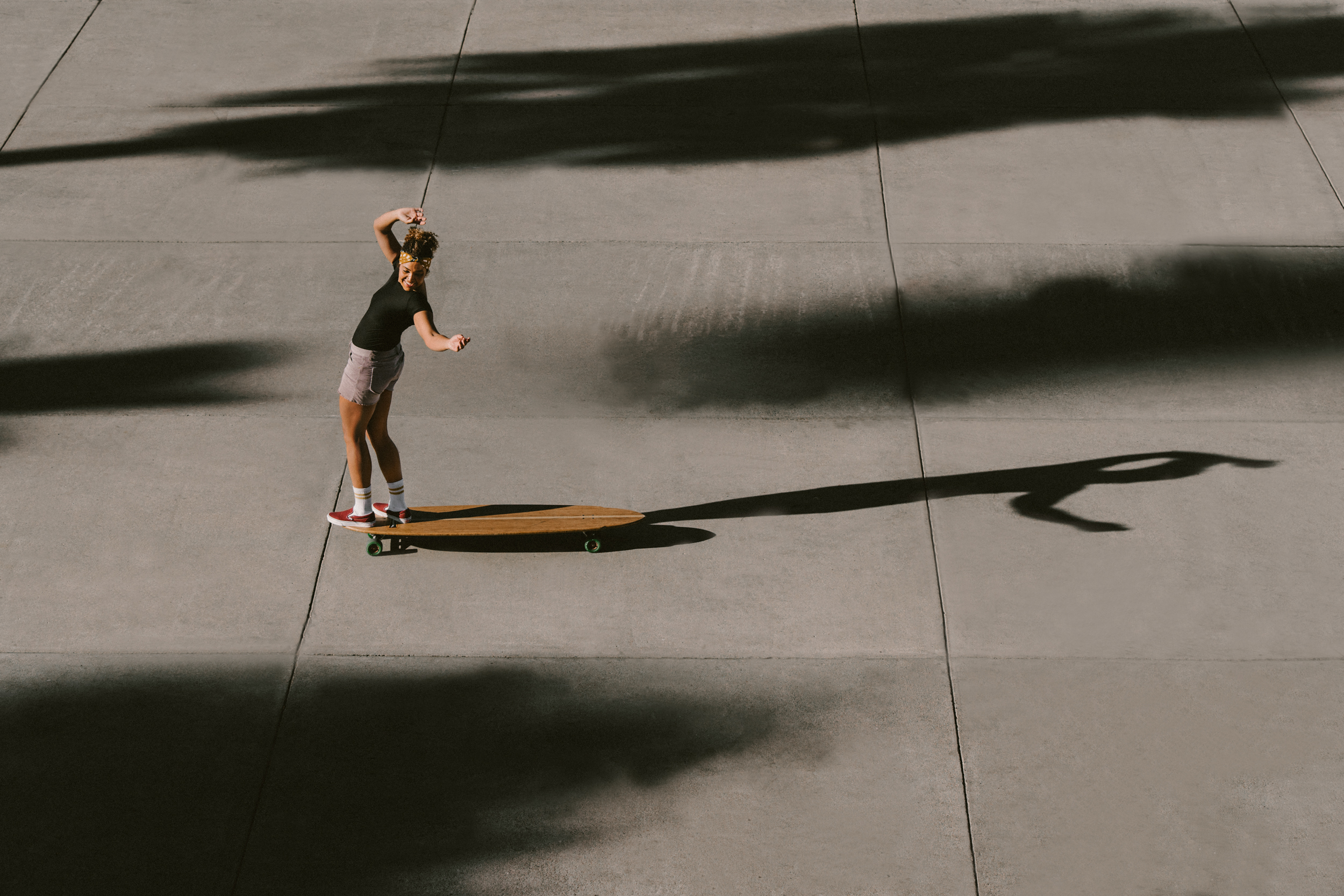
What environment is your favorite to photograph and why?
Wow, tough question! I think my most recent trip to shoot surf in Sayulita, Mexico solidified that I love the added challenge and play of shooting in the sea. When I’m floating in the ocean, dodging waves and composing frames, I feel like the most invigorated, passionate, happy, and challenged version of myself.
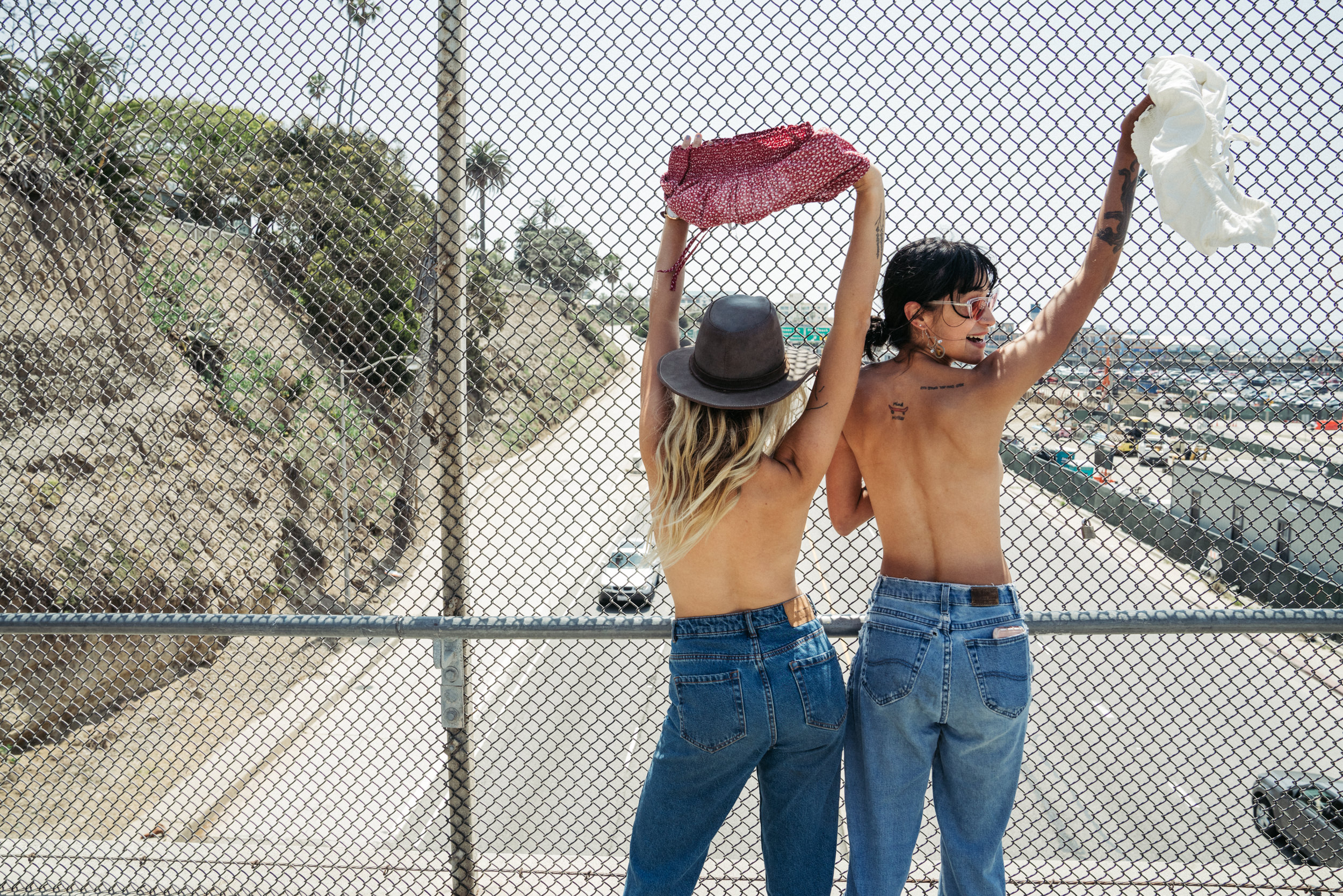
What behind the lens tips do you have for people who want to capture their adventures?
Shoot as much as possible! Every chance you have. Photography is like anything else in life- the more you practice, the better you’re understanding and skillfulness in the craft. The more you’re familiar with carrying your camera on adventures, the more ready you’ll be to capture quick, passing moments.
Be aware of what the climate and landscape will demand of your gear. And lighten your load, only bring what lens (or two) mostly suit your needs. I typically bring the 24-70mm f/2.8 lens for my one, all-around lens.
Environmentalism is important to you — What are big ways we can help be better stewards of our environment this year?
I think that one of the most important things to remember is that the path to being a good steward of our environment is about progress, not perfection. It’s about what an individual can do to be mindful of their individual impact and to use their voice, because contrary to some beliefs, one person can make a difference.
I am mindful of the following three things daily:
One, I think understanding Leave No Trace principles is a great place to start, check out the Outdoor Advocacy Project that launched in December 2019 as a fabulous resource for the outdoor enthusiast to learn how to be a better steward. Two, reduce the consumption of meat and dairy.
The agricultural industry is not only responsible for deforestation, but also an insane percentage of our greenhouse gas emissions and water consumption that’s largely contributing to the climate crisis we are currently in. Check out Changing Tides Foundation “Meatless Mondays” movement for inspiration.
Three, reduce single-use waste and ask yourself the question, “where does it go?” Whether it’s bringing a reusable water bottle and coffee cup, reusable totes, bulk and produce bags, shopping second-hand or local for goods instead of shipping from the internet, visiting “refill” shops for home and body supplies… each of these things reduces transport and packaging substantially, therefore reducing the stress on the planet from creation to disposal, and makes for a more circular economy.
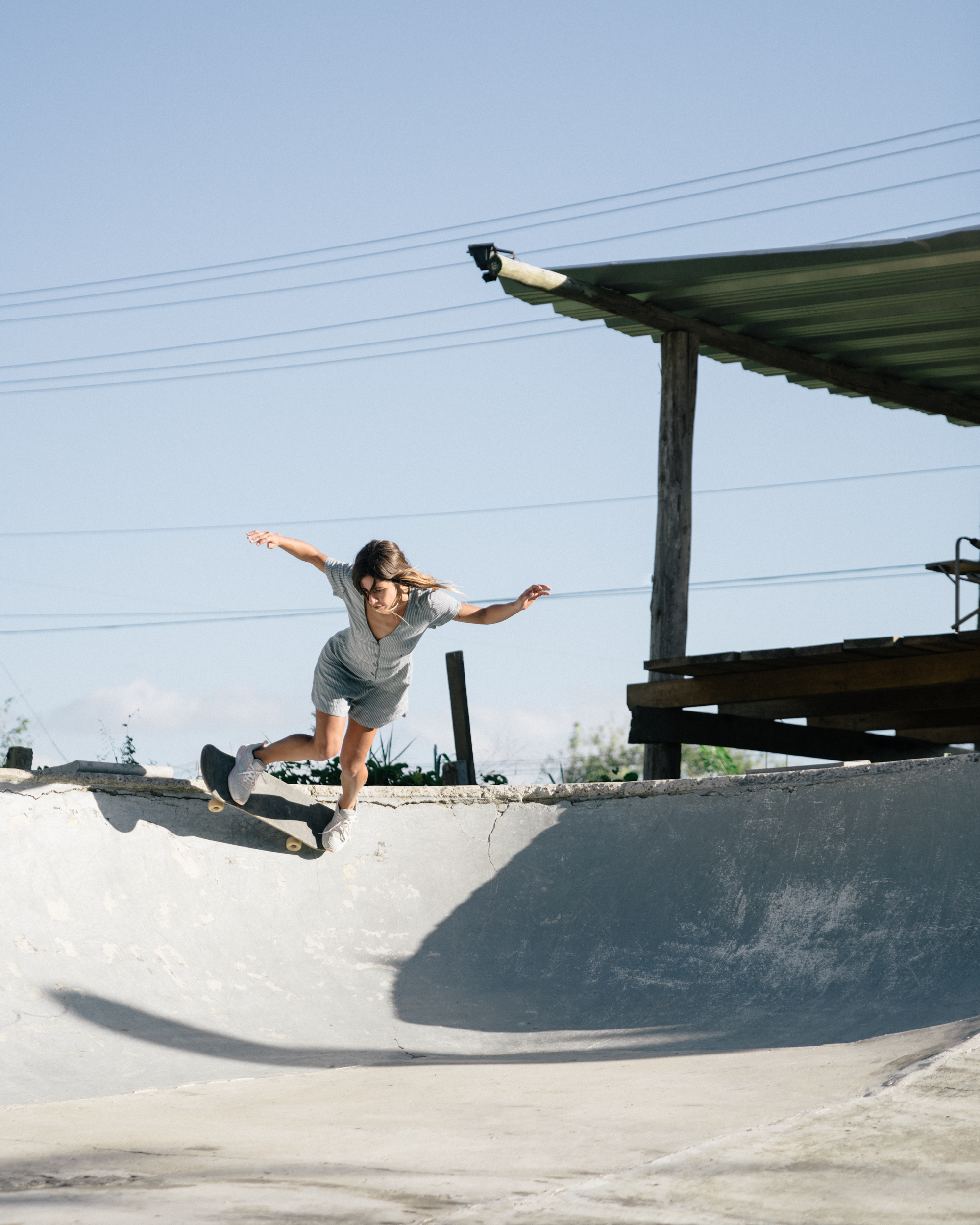
You’ve said you want to focus on telling more stories about women forging a path forward in the outdoors and action sports industries. Where are you heading first?
I’m currently talking to you from a small surf town on the western coast of mainland Mexico, called Sayulita. It’s a pretty well-known surf destination and home to Shore Skatepark. I’ve been meeting and creating with some amazing women- both Mexican and French. Next month, I’m journeying to a very small surf village in Karnataka, India. I’ll be staying at The Shaka Surf Club, a surf and skate community started by a friend of mine and her partner. Sport, especially surf and skate, is not encouraged for girls in India. The Shaka Surf Club works toward building a community that promotes the sport and culture of surfing and skating there. I’m looking forward to learning, uncovering layers there and telling stories from a remote destination not typically thought of for surf. I’ll be doing some volunteer work in the village as well.
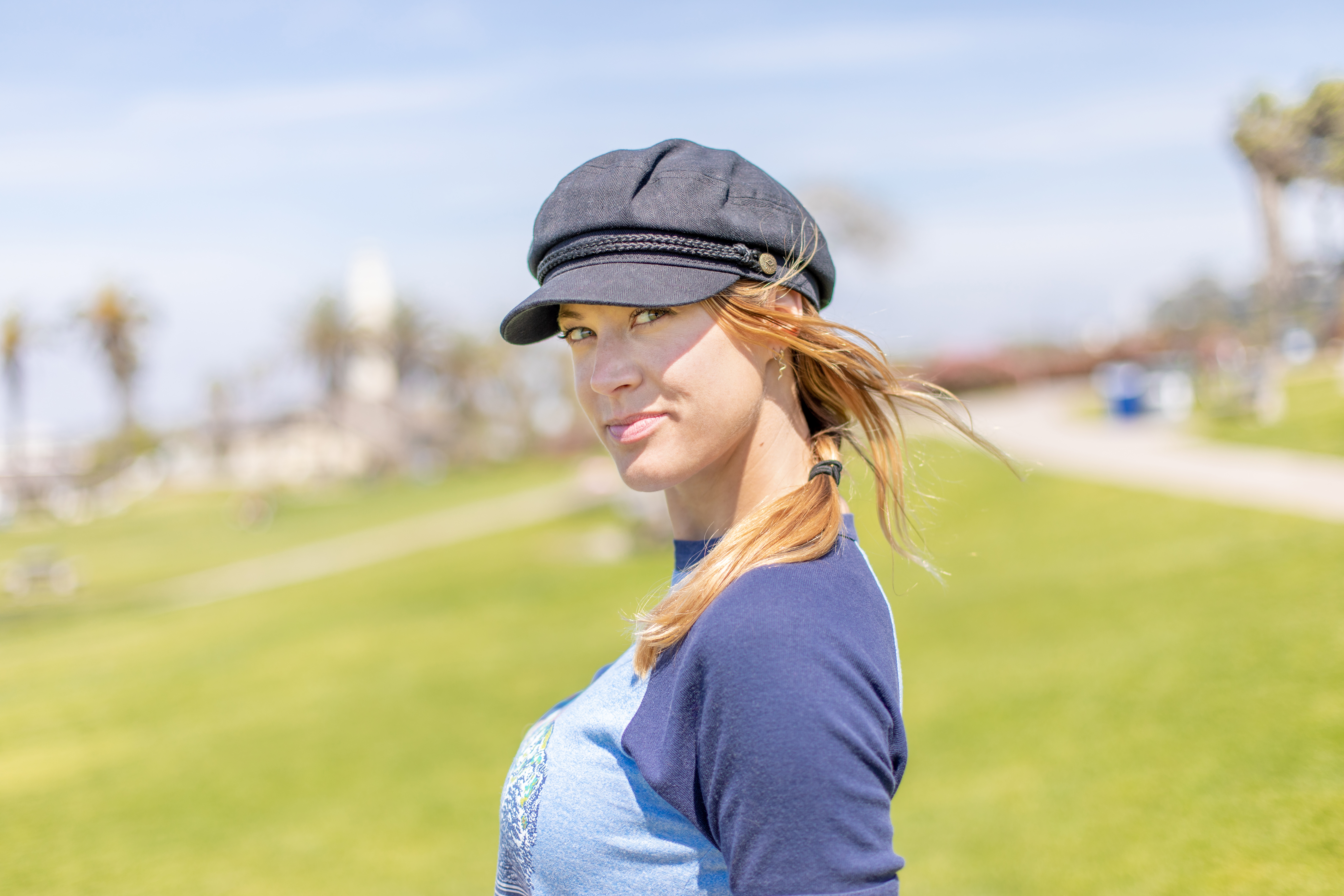
Jo Savage
